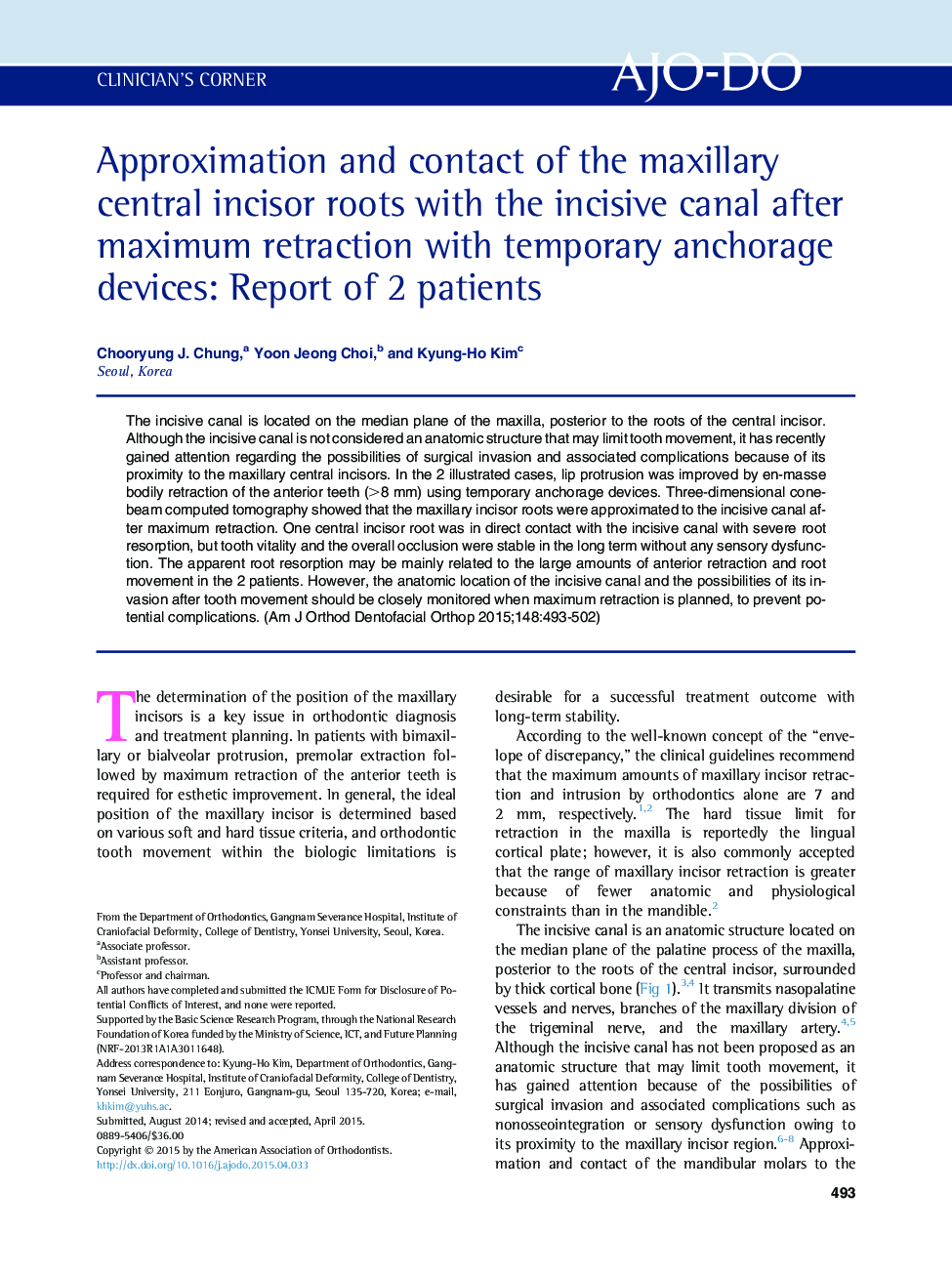| Article ID | Journal | Published Year | Pages | File Type |
|---|---|---|---|---|
| 3115457 | American Journal of Orthodontics and Dentofacial Orthopedics | 2015 | 10 Pages |
•Maxillary central incisor roots approximated to the incisive canal following maximum retraction.•Apparent root resorption was noted at the incisor root in direct contact with the incisive canal.•Incisive canal-incisor root relationship should be monitored when maximum retraction is planned.
The incisive canal is located on the median plane of the maxilla, posterior to the roots of the central incisor. Although the incisive canal is not considered an anatomic structure that may limit tooth movement, it has recently gained attention regarding the possibilities of surgical invasion and associated complications because of its proximity to the maxillary central incisors. In the 2 illustrated cases, lip protrusion was improved by en-masse bodily retraction of the anterior teeth (>8 mm) using temporary anchorage devices. Three-dimensional cone-beam computed tomography showed that the maxillary incisor roots were approximated to the incisive canal after maximum retraction. One central incisor root was in direct contact with the incisive canal with severe root resorption, but tooth vitality and the overall occlusion were stable in the long term without any sensory dysfunction. The apparent root resorption may be mainly related to the large amounts of anterior retraction and root movement in the 2 patients. However, the anatomic location of the incisive canal and the possibilities of its invasion after tooth movement should be closely monitored when maximum retraction is planned, to prevent potential complications.
